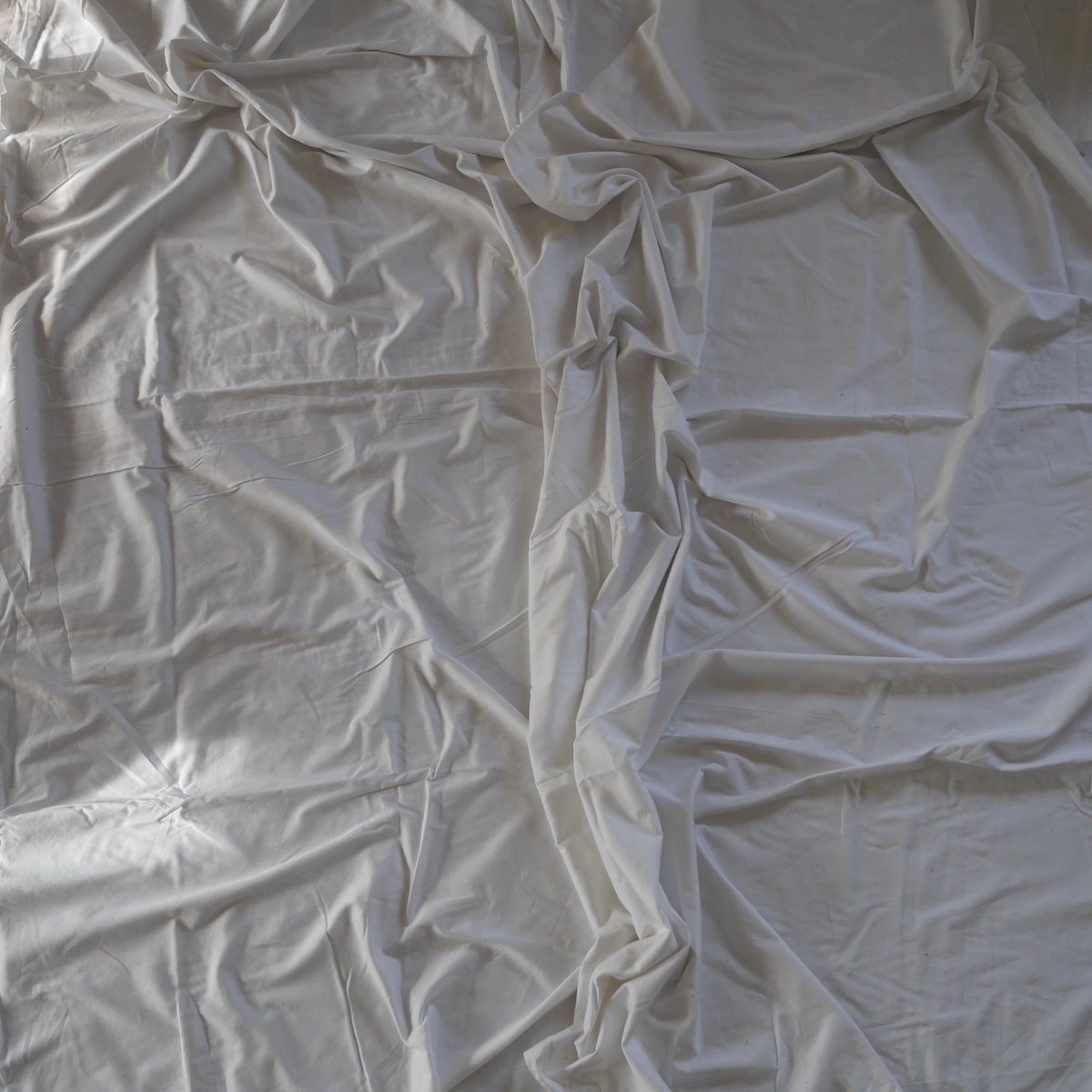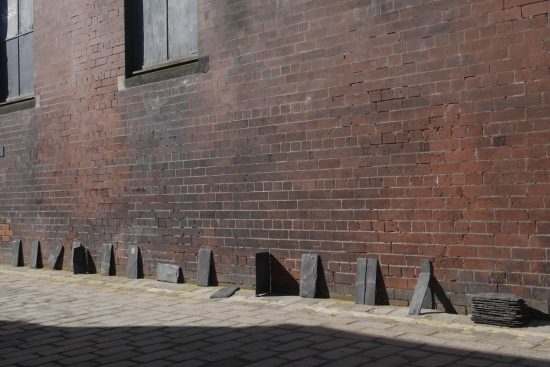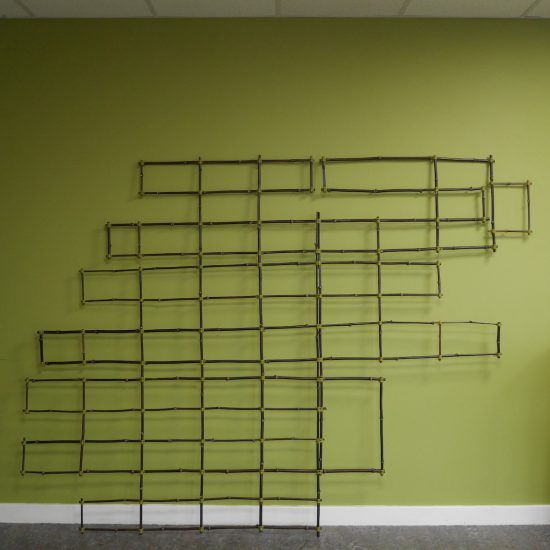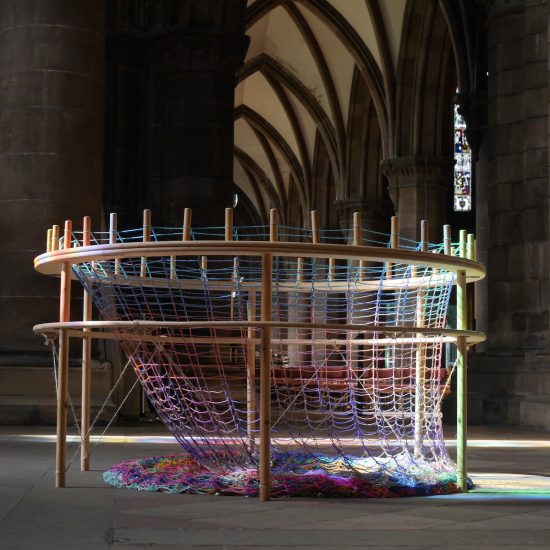2020
cotton sheet on seagrass flooring
‘Stilled Life’ an image of suffering, in a time of suffering. A temporary installation for Good Friday, made in the artists’ home, Glasgow. By Good Friday 2020 the global impact of the Covid-19 pandemic was overwhelming, the number of people affected and the lists of those who had died, heartbreaking. All the normal structures and routines of life had been suspended. Such disruption had taken us all into uncharted waters, which were hard to navigate.
On Wed 8th April, The Guardian published an article by Shaan Sahota, a junior doctor working in ICU, who wrote:
‘Caring for a Covid+ patient is not what you think, I’m so close to them – dripping eye drops under their lids, so that their unblinking eyes don’t dry out. I may never meet them but I hold vigil over the traces of their breathing for signs they need help. I change bedsheets from under them. I don’t get to meet my patients but what I want to say to them, with all the force of my care is: it’s all for you, everything we have. Your life matters.’
These compassionate words distilled the overwhelming scale of the pandemic down to two human beings, one person tenderly cared for in an intensive care bed by another. It was these small but significant acts of loving kindness that became the catalyst for ‘Stilled Life’.
The title came first, referencing the vigils kept at bedsides and the still point within the Good Friday narrative. The medium of a bedsheet hinted at the domestic focus of life under lockdown and alluded to the sheets on intensive care beds across the world.
Having spread the bedsheet on the floor, we began to gather and fold it, creating a relief sculpture of the figure of Christ stretched on the cross. At first, the action was decisive, a twist of cloth to form a hand, a fold shaping the bulk of the shoulders, the stretched sinews of the arms, the turn of the lolling head, folding the cotton to hint at the ribcage, waist and hips, the contours of the legs, slightly bent knees, wider calves, narrow ankles, the sharp curve of heels, the feet turned to the left. As the figure emerged from within the folds, our actions slowed down, became more careful, each touch an act of devotion, a prayer to the one whose form we were recalling. We handled the cotton lightly, tenderly, the way we would a body, a patient, a person.



